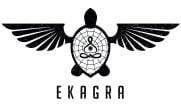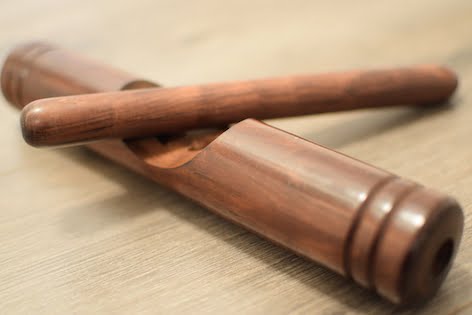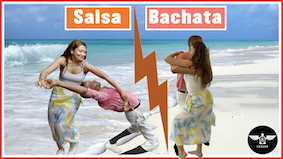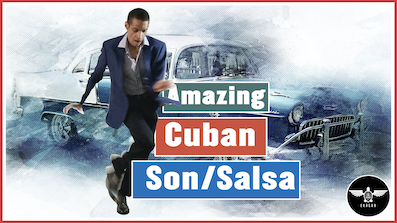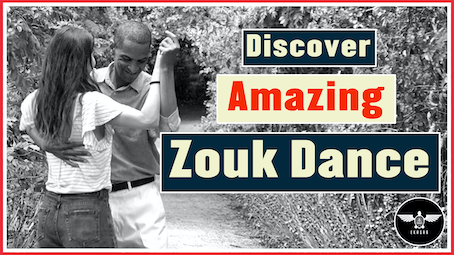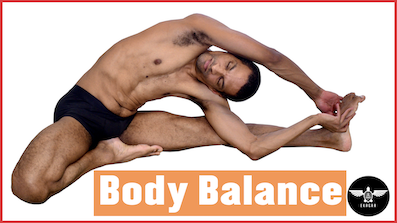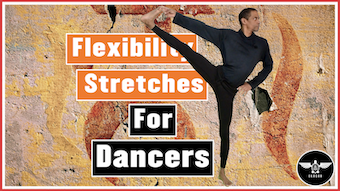
Recognizing the clave in salsa is one of the most challenging tasks for dancers. Yet very few videos or posts explain how to find it.
Of course, some great videos teach the theory of the clave, and they are useful. But, most of them do not explain how, as a dancer, you put the theory into practice. On the other hand, some posts even go as far as stating to “stop looking for the clave, it is not there” when in effect, the clave “is always there, even when it is not”.
What no one tells you is why you struggle and what the remedies are against your struggles.
To change that, I made a complete step-by-step guide to how to master the clave salsa.
What you have seen in your salsa classes
Chances are, your instructor played a slow-paced salsa song that went like this “123-567“. Of course, when you listen to this instructional audio, it’s easy to hear the clave patterns since someone tells you where they are. However, when you listen to real salsa music, you face a brick wall and find it difficult to pinpoint the clave beats.
As for your instructor, chances are they probably don’t know how to recognize it in the first place. Unfortunately, there are more rubbish salsa teachers than you might imagine. I even once met a lady who held a diploma as a certified salsa instructor, but when I danced with her, she could not recognize her left foot from her right one.
How to spot fake teachers
If you want to know how good your salsa instructor is, choose any random song and ask them to dance to it. That might sound disrespectful, but would you go to a dojo and learn martial art from a bullshido artist?
Or observe how they move by themselves without the help of a partner. If they can’t dance solo, they can’t dance, period.
The truth you don’t want to hear
As a student, the reality is that you might be partially responsible for not having developed a good understanding of the clave in salsa. Indeed, many students want to rush to turns, styling, and show-off rather than spend time learning to listen to the clave properly. This is a terrible mistake, especially considering that 95% of salsa does not involve a single salsa step (discover the 95% that matter).
How do I recognise the clave salsa?
You must have a method to identify where the clave is in a salsa song. It’s like driving a car. You don’t go from novice to expert in one go. Therefore, I have devised a 5-level musical hearing program that takes you from complete beginner to full independence in an organized and structured way. And the best way to recognize the clave salsa is…to listen to Cuban rumba first and foremost. Indeed, Cuban rumba is one of the music styles that use the clave as its main instrument.
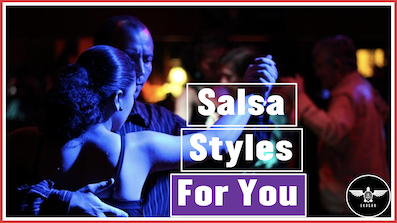
Why is rumba clave good for salsa?
One of the key reasons why many people cannot hear the clave in a salsa song is that the instrument is just one of many encumbering ones. Therefore, it’s easy to get distracted. What you want is a music type close enough to salsa; that uses the clave all the time; yet does not get too many interferences from other instruments. And that’s where rumba comes to play. Why do you think world-class Cuban salsa dancers are also great with rumba dance, chango, etc.? It’s because the whole system is engrained into their training. Therefore, our first level will be about hearing the clave in Cuban rumba.
Rumba clave 3/2 and 2/3
There are two main clave patterns in a typical rumba song. The 3/2 and the 2/3. These represent the number of times you will hear the clave on a typical basic step. Such a step is made of two measures of 4 beats each. Therefore, on a total of 8 beats, you will hear the clave five times.
🎶2/3
You hear the clave twice on the first measure and three times on the second one.
🎶3/2
On this one, you hear the clave three times on the first measure and two times on the second one.

The pattern 3/2 is the most commonly used one. Therefore, we will focus our attention on it. But the principle would be exactly the same for 2/3 songs.
🇨🇺 Level 1 video: Rhythm and patterns of the clave in rumba
This video teaches you how to identify the clave in a typical Cuban rumba song. To avoid any accusation of “picking up my songs” (which is what most of the phony salsa teachers do), I selected the first video that came up when I typed “Cuban rumba dance” on YouTube. You can type the same keywords, and that video will come up. Then I broke it down the way I heard it, playing with the musician, and showing some steps. It’s, therefore, an excellent first-level guide to use over and over. If you are still tempted to brush this one aside because it is not salsa, I can tell you only one thing YOU WILL FAIL AND WILL NEVER BE ABLE TO UNDERSTAND THE CLAVE SALSA.
I advise people who are serious about their training to spend at least six weeks listening exclusively to rumba songs. You choose any random Cuban rumba song then you play along. Use two sticks and start playing. Then add up very few simple left/right steps or forward-backward. The point here is not to dance salsa but to get the rhythm. The secret of my training is that I use rumba, chango, etc., as music when I work on my body movement. That way, I am training my ears passively while actively training my body. Do that, and you will see the difference it makes to your salsa game in the long run.
So, two questions might come up from this first session:
– What if I dance LA or NY style?
– Why should I spend so much time on this hearing?
■ What if I dance LA or NY style?
The principle does not change at all. Once you have developed great hearing for the music and can move your body, you can accommodate the style you want. Moreover (and that’s why I say salsa has nothing to do with salsa steps), what you are doing is finding the patterns. Once you can identify them, you can “write” whatever code you want (on 1, on 2, on 10,000, or 10 billion if you want).
■ Why should I spend so much time on this hearing?
I could give you many examples of people who learned salsa steps and who, after 10, 15, or 20 years still cannot dance salsa on the beat. I know such examples because when I started, I thought these people knew how to dance salsa, even if I was not so impressed with their body movements. Then I researched the topic and realized guys like Maykel Fonts, Yoannis Tamayo, practice rumba and other afro-Cuban dances a lot, even more than salsa. So, I wondered why. The more I investigated, the more I realized that these Afro-Cuban dances trained your ears and body simultaneously. Secondly, once you can do these dances, salsa is very easy.
🇨🇺 Level 2 video: Rumba with Drums
The second level of our clave salsa musical hearing program still focuses on rumba. But this time, we add the drum—the speed changes and is a little faster than the previous level. And the objective is for you to recognize the clave on different musical variations (since the tempo of a song is generally one of the reasons why students quickly lose the beat).
You might be tempted to think this is a waste of time. But if I am giving you the secret now, it’s because this is the fastest way to develop good hearing for the clave salsa.
🇨🇺 Level 3 video: Rumba with more instruments
This third level should not be called rumba but the evolution of rumba. If you listen to a song such as Gilles Peterson’s presents Havana Cultura: New Cuba Sound, you can see how the song departs from the street rumba to be more studio based. By now, you probably understand what I am doing—taking you from songs with only the clave to tunes with more instruments. At this level, the clave is still present and perceptible, and the rhythm is generally loopy (the same type of rhythm over and over). You should be able to integrate simple salsa steps (such as the ones in the video below) into these songs. However, your key objective is to listen and find the pattern of the clave. Therefore, the steps should be simple, like side steps, etc. If you keep repeating them constantly, eventually, your brain will get used to finding the clave in a song.
🇨🇺 Level 4: clave disappearing
Here, we listen to salsa music. Ideally, we choose a slower-pace salsa without too many changes in rhythm. In the example I provide, you can hear the clave at the beginning, but as instruments kick in, it becomes harder to spot where it is. One thing to remember is that the clave itself is simple and repetitive. It’s like a factory worker whose only task is to punch holes in a steel material. It does not matter, what other people in the factory do, or the noise around you; your only job is to punch holes. Similarly, with the clave, you do not let yourself be distracted by other instruments but only play the clave repeatedly. Once you are proficient in doing this, you can veer to other instruments.
🇨🇺 Level 5: No clave
By now, you should be comfortable putting clave salsa into anything. Still, some songs don’t have it, or it fades away quickly. What should you do in those cases? If you spent time on the previous levels, especially the 1 to 3, you will develop a “feel” for the clave. By now, your ears are well trained; believe it or not, they can perceive the rhythm of a song. But, of course, if you went straight to level 5 and disregarded the previous ones, you would struggle.

Discover new, untapped materials
Learn Cuban Salsa, Bachata, Improv’ and many other dance styles. Check out these videos and see what you can achieve in less than 3 months. Private lessons available for just £35/Hour. Free body movement and basic salsa and bachata lessons provided.
